What is the mysterious drone model we spotted in our interview with General Bob Behler?
- By Alex Hollings
Share This Article
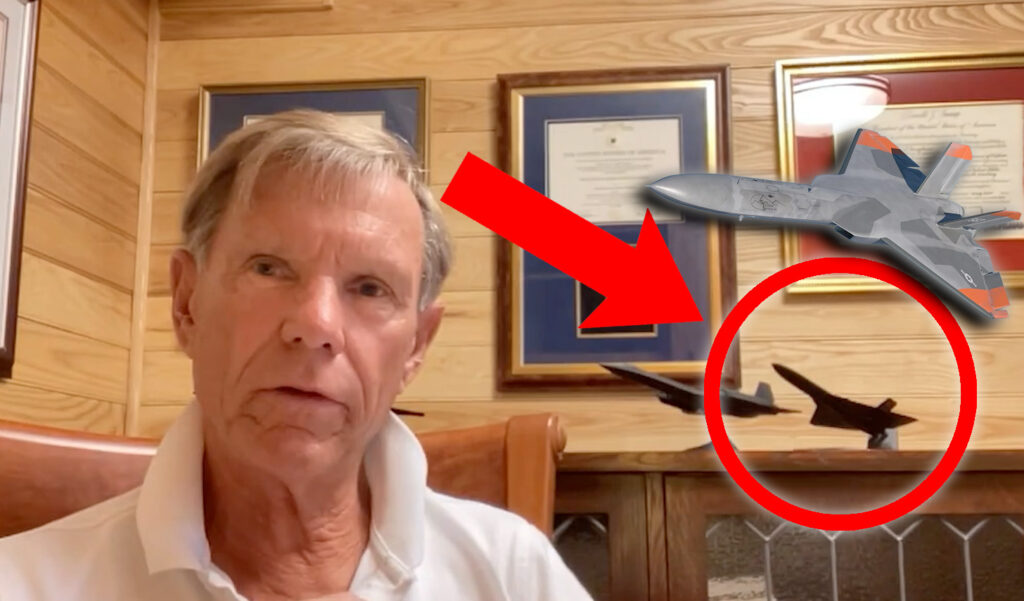
In a recent video we published on YouTube, we showed you a clip of our interview with retired Air Force Major General Bob “Lorenzo” Behler – and as gripping as his stories about flying the SR-71 truly are, many eagle-eyed viewers couldn’t help but be distracted by the unusual looking model aircraft on the shelf behind him.
To me, the avalanche of comments we received asking about that model aircraft is just further proof that I’ve been lucky enough to find my tribe in the AirPower audience because you’d better believe I had the very same question during the interview. At the close of our conversation, I directly asked the general about that model, and just as you might expect – he was rather tight-lipped about the exotic-looking aircraft.
“Before I let you go, I have one question that I need to ask you in particular, general,” I said as we were wrapping up. “You’ve got a U-2 and an SR-71 behind you… And a third aircraft that I can’t tell what it is. Can you tell me what that third aircraft model is?”
“No, I can’t talk about that one,” General Behler said firmly. Out of respect for the general, I wasn’t going to push it any further, but he was kind enough to offer a small bit of elaboration.
“This one here?” The general asked as he spun in his chair to pick up the model. But instead of moving it into the view of the camera, he set off to the side where we could no longer see it.
“It’s an unmanned vehicle. It was built in my last job,” the general explained — referring to his term as the Director of Operational Test and Evaluation (DOT&E), which is a presidentially-appointed position. This role made General Behler the principal official and adviser to the Secretary of Defense on all DoD matters related to operational (OT&E) and live fire test and evaluation (LFT&E) of DoD systems.
The general said that the aircraft was designed, “to be a 5th generation aerial target.” He added, “We have to have a low-observable target so we could practice and that’s what it is.”
The general’s discretion makes a great deal of sense, as the 5th generation aerial target program (5GAT), while publicly disclosed, has not been particularly transparent.
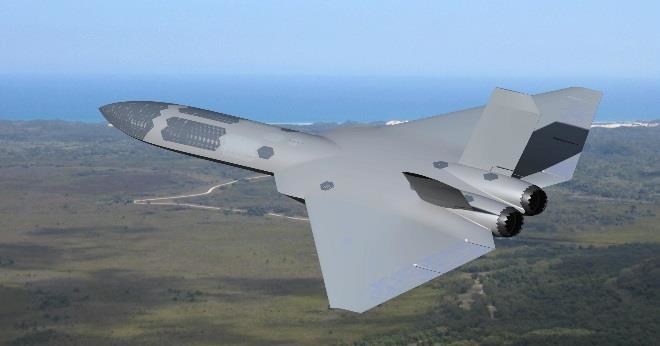
The effort began in 2006, but was shelved in 2020 after a crash during the drone’s maiden flight, only to be revived midway through 2023 with a new $77 million contract that may result in much more than a highly capable target.
This relatively inexpensive drone was designed specifically to be capable of mimicking platforms like China’s J-20 and Russia’s Su-57, and could ultimately become the basis for a very capable drone wingman for forthcoming fighters like the Next Generation Air Dominance platform that is in active development.
Related: America’s NGAD fighter emerged from a classified billion-dollar X-Plane
What is the 5GAT stealth drone capable of?
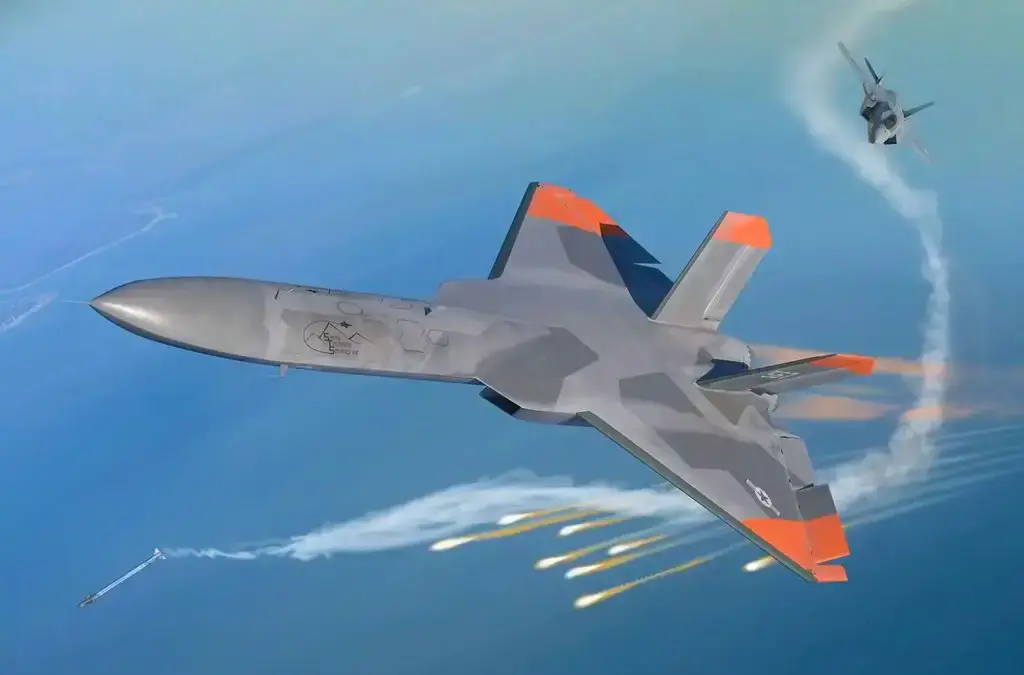
The 5GAT drone has only seen a single test flight, which despite meeting all of its testing objectives, ultimately ended in a crash. As such, discussions about its capabilities are mostly theoretical. However, based on its dimensions, shape, and disclosed technical elements, we can make some fairly realistic predictions.
According to an Air Force press release, the aircraft is 40 feet long with a 24-foot wingspan and vertical tails that stretch nine feet from the ground. A 2012 PowerPoint presentation on the effort says the 5GAT drone is in the “12,000-pound class” in terms of gross take-off weight. Another Air Force PowerPoint breaks down the effort’s performance requirements, listing a maximum altitude of 45,000 feet, and a mission time (or how long its onboard fuel stores should last) of two hours.
“It’s the size of a T-38 trainer aircraft,” explained Dr. Steven Brandt, who teaches aircraft design at the US Air Force Academy and assisted in the design of the aircraft. “[The target drone] uses two T-38 Trainer engines. We explored multiple options to refine its shape and helped eliminate designs that were not as good.” The Northrop-sourced T-38 Talon is a twin-jet supersonic jet trainer used by the Air Force.
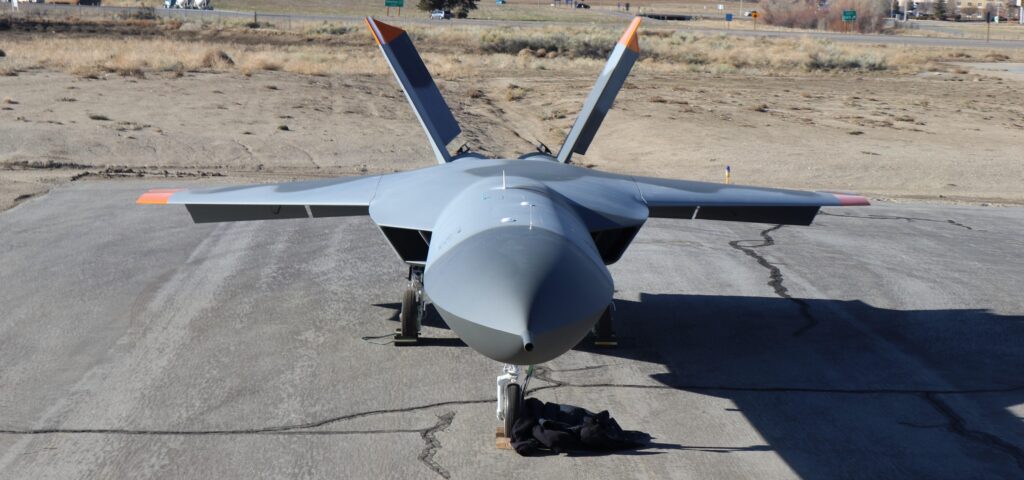
The fact that the 5GAT drone leverages two of the same General Electric J85-5A afterburning turbojet engines as the T-38 and has similar overall dimensions, suggests that the platform is capable of supersonic flight. After all, the T-38 is known to achieve speeds as high as Mach 1.3. However, according to an interview Sierra Technical Services president Roger Hayes gave to Flight Global, the design was not optimized to do so.
“It would probably go supersonic without much trouble, but none of the structure was analyzed or designed for supersonic [flight], nor were the inlet lips,” Hayes said.
Hayes also told Flight Global that the aircraft can sustain maneuvers up to 7.5Gs and -2Gs, though not for long durations due to engine limitations. The F-35C is similarly limited to 7.5G maneuvers due to its larger wingspan, though it can sustain them for longer thanks to its powerful Pratt & Whitney F135 turbofan engine.
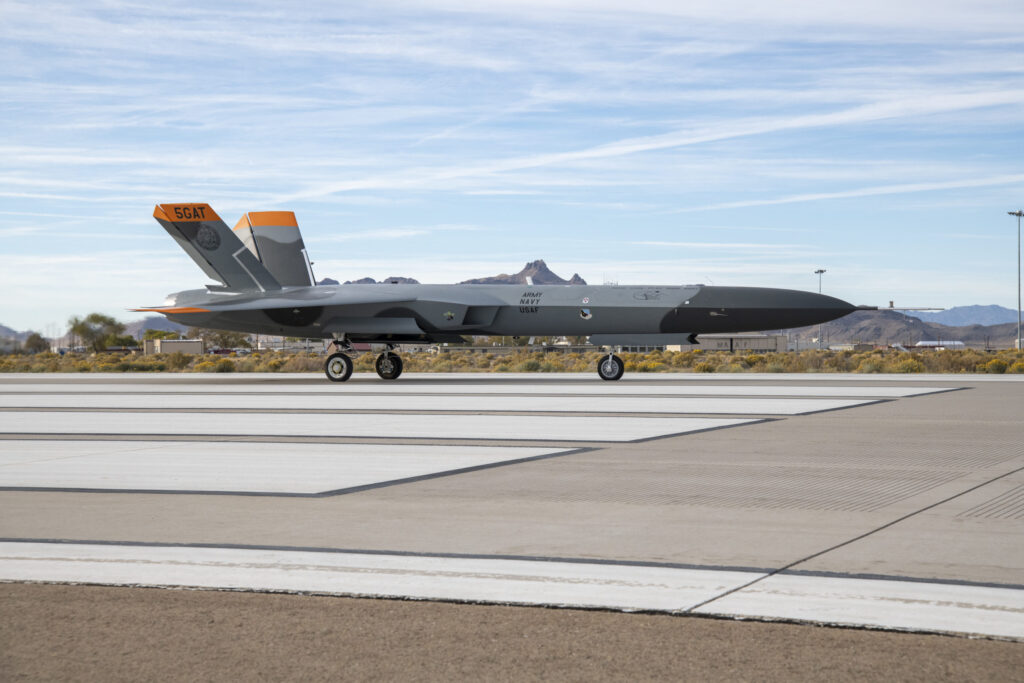
It’s not particularly common for fighter aircraft to pull such extreme Gs, and 7.5Gs will allow the 5GAT drone to emulate some very advanced maneuvers.
Based on concept art released by Sierra Technical Services, it appears the drone is either already equipped or is soon to be equipped with a countermeasure pod that will allow it to deploy chaff and flares in an attempt to confuse inbound radar or infrared-guided missiles, providing an even more realistic simulation of combat. This capability, combined with a respectable degree of stealth, speed, and maneuverability, could make for a very difficult target.
During my research, I even came across a quote from General Behler himself discussing the value this drone could offer.
“To determine whether a system really is combat-credible, we must test it under realistic conditions. That includes putting it up against a realistic threat,” Behler was quoted as saying in a Defense Department press release. “Right now, we lack a test platform that truly represents fifth-generation air capabilities. Filling that gap as soon as possible is absolutely essential to both testing and training,” he added.
Related: The Air Force created a F-35 ‘Frankenbird’ for the first time – with help from the A-10
The 5GAT’s messy history
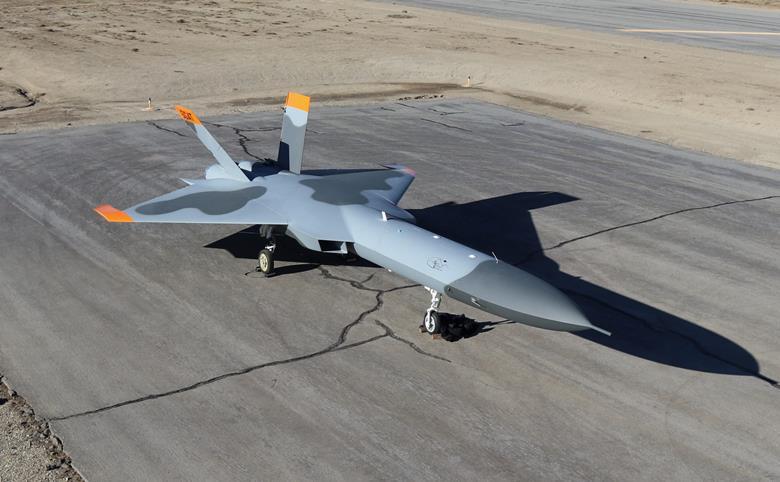
The 5GAT effort formally began in 2006 with an Air Force-commissioned study into developing a low-cost target drone that could mimic the stealth profile and capability set of advanced fighters being fielded by adversary countries like Russia and China.
The effort was transferred to the DOT&E just before General Behler took command in December 2017. By that point, California-based Sierra Technical Services had been awarded a contract to produce a single flying prototype.
In 2018, the Air Force revealed that the aircraft’s design was a joint effort from a team of US Air Force Academy cadets, aerospace instructors, and industry veterans hailing from groups like Lockheed Martin’s legendary Skunk Works – whom the DOT&E’s deputy director for air warfare, Michael Crisp, lovingly referred to as “greybeards.”
“As far as we know, this is the first large stealth target drone,” Thomas McLaughlin, the Academy’s Aeronautic Research Center director, said in December 2018.
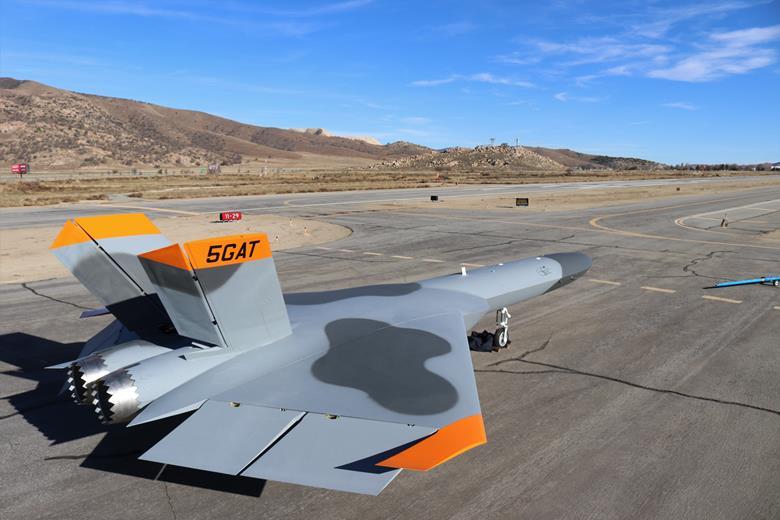
However, after completing 24 ground taxi tests, the stealth drone crashed during its initial test flight on October 23, 2020, and the effort was placed on hiatus.
“The air vehicle was lost during its maiden flight test as the result of an undiscovered software error,” explained a Defense Department press release following the new contract award. However, “the combined system successfully met all ground test objectives” and “the aircraft configuration and overall design is [sic] still considered to be sound.”
The effort was subsequently transferred to the Test and Resources Management Center (TRMC) in the Office of The Secretary of Defense from the Director of Operational Test & Evaluation (DOT&E), where the program languished in obscurity until April 2022 when the TRMC chose to revive it by releasing a solicitation for bids through a US Army contracting office.
On August 4, 2023, the DOT&E awarded South Carolina-based Advanced Technology International, Inc. with a $77.2 million contract to restart the effort, with Sierra Technical Services still falling within the contract as the prime contractor to develop and build the airframe.
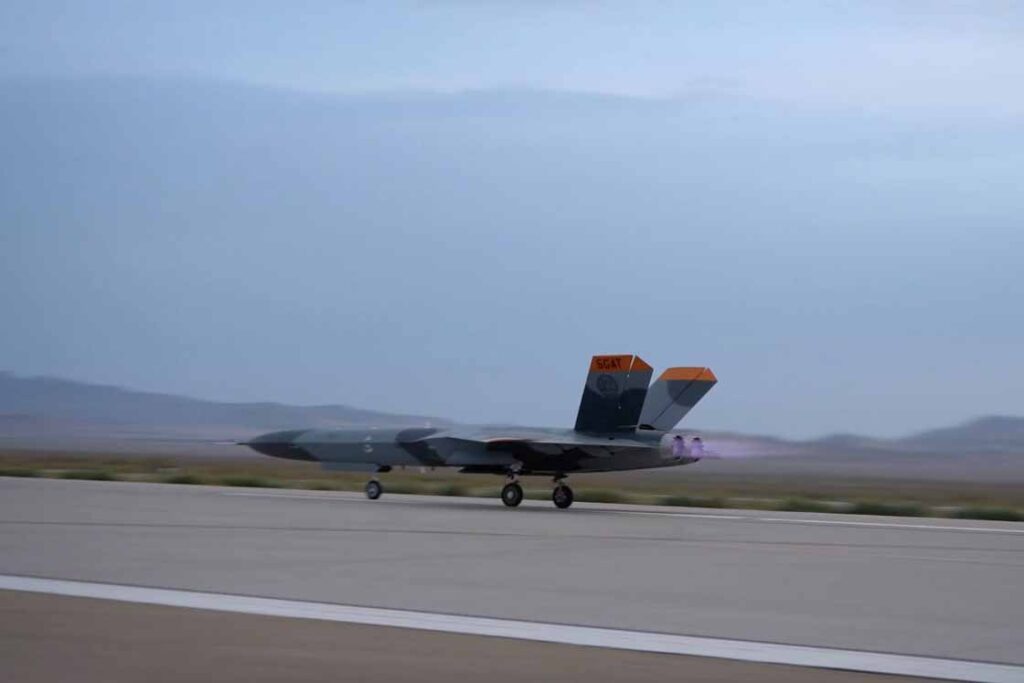
“Due to the increased cost and lifespan of the latest, fifth generation of fighter aircraft, there are no retired airframes available that adequately represent the characteristics of fifth generation threats. Key amongst these characteristics is size, signature, and electronic attack payloads,” the award announcement explained.
The implications of fielding a drone with the stealth and aerobatic capability required to realistically mimic the performance and survivability of adversary 5th-generation fighters extend well beyond the 5GAT’s intended duties as a missile-magnet. As early as 2020, Sierra Technical Services was already pitching the idea of turning these target drones into fully-fledged UCAVs (Unmanned Combat Aerial Vehicles) to fly alongside advanced 5th and 6th-generation fighters in the “loyal wingman” role.
The Air Force has been actively developing such a capability through its Skyborg program, aiming to field AI-enabled drones that will fly alongside the Next Generation Air Dominance fighter that is in active development, as well as alongside the upgraded Block 4 F-35 once it emerges. These wingman drones will fill a variety of roles, ranging from flying ahead to extend sensor reach and conduct electronic warfare and even carrying air-to-ground or even air-to-air munitions to engage targets on the crewed fighter’s behalf.
Read more from Sandboxx News
- More than a century after WWI, war continues to be the same in Ukraine
- Special Operations Command’s commando aircraft are in jeopardy
- US Navy helicopters sink 3 Houthi attack boats attempting to seize cargo ship
- GE’s hypersonic rotating detonation engine breakthrough could change aviation forever
- Fighter pilot breaks down how aerial refueling works
Related Posts
Sandboxx News Merch
-

‘AirPower’ Classic Hoodie
$46.00 – $48.00 Select options This product has multiple variants. The options may be chosen on the product page -

‘Kinetic Diplomacy’ Bumper Sticker (Black)
$8.00 Add to cart -

‘Sandboxx News’ Trucker Cap
$27.00 Select options This product has multiple variants. The options may be chosen on the product page

Alex Hollings
Alex Hollings is a writer, dad, and Marine veteran.
Related to: Airpower
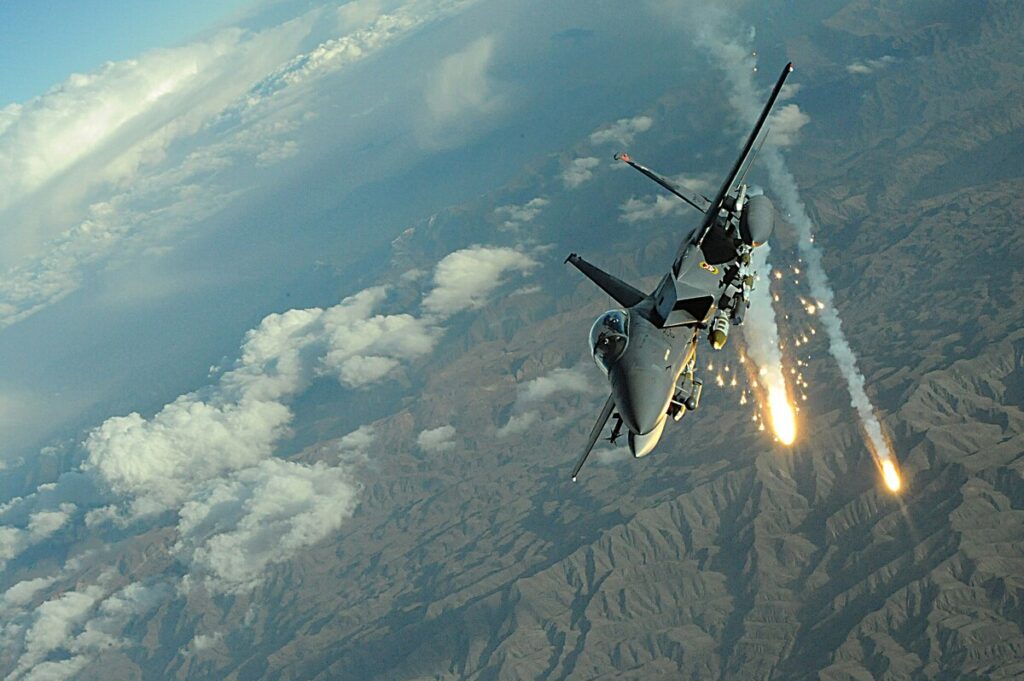
How an F-15E scored its only air-to-air kill… with a bomb

The military roots of Juneteenth and why we celebrate it
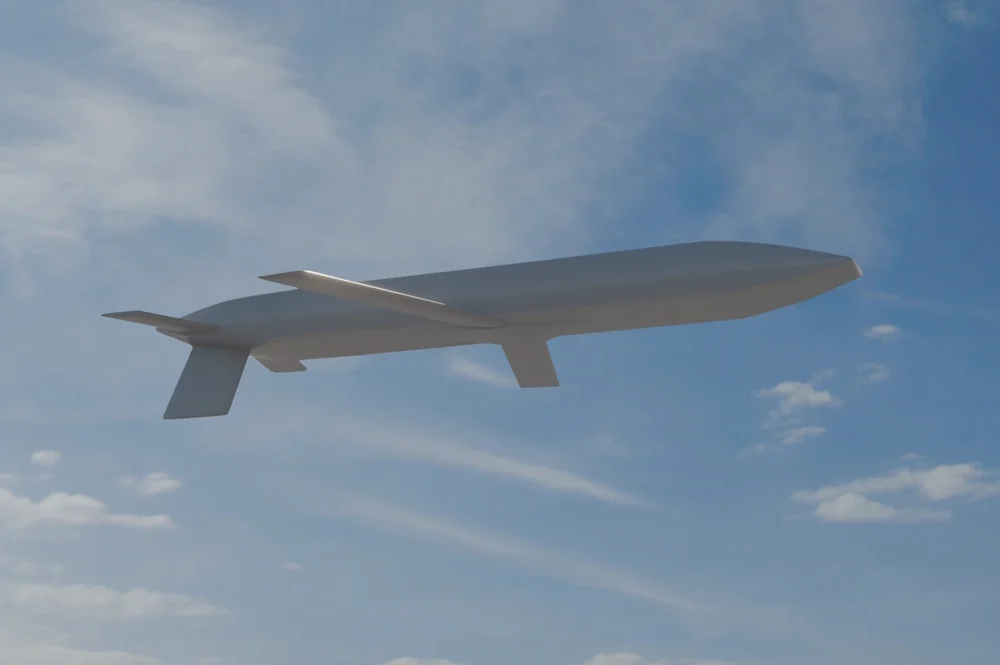
Air Force gives us a glimpse of its new AGM-181 LRSO nuclear missile
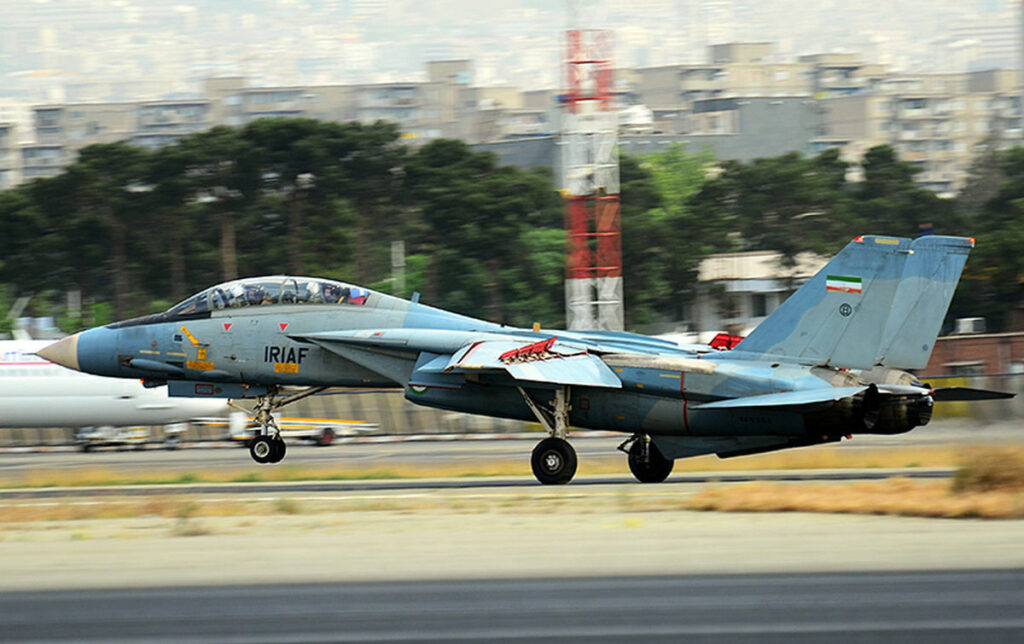
Israel wipes out Iranian F-14 Tomcats on the airstrip
Sandboxx News
-

‘Sandboxx News’ Trucker Cap
$27.00 Select options This product has multiple variants. The options may be chosen on the product page -

‘AirPower’ Classic Hoodie
$46.00 – $48.00 Select options This product has multiple variants. The options may be chosen on the product page -

‘AirPower’ Golf Rope Hat
$31.00 Select options This product has multiple variants. The options may be chosen on the product page -

‘Sandboxx News’ Dad Hat
$27.00 Select options This product has multiple variants. The options may be chosen on the product page
